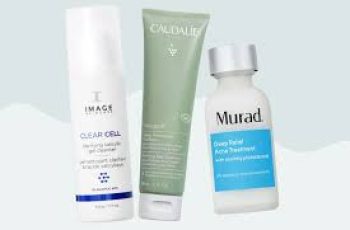
.webp)
.webp)
.webp)
How Long Does it Take for Vitamin C to Absorb Into the Skin?
.webp)
.webp)
Vitamin C is one of the most researched, respected, and recommended ingredients in skincare, known for brightening, protecting, and smoothing the skin when used correctly and consistently.
.webp)
.webp)
.webp)
But how fast does it actually absorb into the skin?
.webp)
.webp)
This is a question that even dermatologists don’t have a clear-cut answer to.
.webp)
.webp)
.webp)
There are many factors that determine how quickly your Vitamin C serum is absorbed, and not all Vitamin C products are created equally.
.webp)
.webp)
Understanding how Vitamin C works and what affects its absorption can help you get the best results without wasting your product or your money.
.webp)
.webp)
.webp)
Let’s explore how long it takes for Vitamin C to absorb, and what you can do to make it work better and faster in your skincare routine.
.webp)
.webp)
What Influences How Fast Vitamin C Absorbs?
.webp)
.webp)
.webp)
The time it takes for Vitamin C to penetrate the skin varies depending on the product type, your skin barrier, pH levels, and how you apply your skincare.
.webp)
.webp)
Your skin type also plays a major role in how effectively Vitamin C is absorbed.
.webp)
.webp)
.webp)
According to early research by Dr. Sheldon Pinnell in 2001, Vitamin C (ascorbic acid) is best absorbed into the skin at a low pH between 2.0 and 2.5.
.webp)
.webp)
That means products formulated at this pH will work faster and more efficiently.
.webp)
.webp)
.webp)
The original studies applied Vitamin C mixed with hyaluronic acid to the skin for 22–24 days.
.webp)
.webp)
While informative, this doesn’t exactly mirror how we use Vitamin C serums in real life—once or twice a day, for just seconds per application.
.webp)
.webp)
.webp)
There is no current research that precisely measures how fast Vitamin C absorbs into human skin after a single daily application.
.webp)
.webp)
However, several clues help us estimate absorption rates and optimize usage.
.webp)
.webp)
.webp)
Top 10 Factors That Influence Vitamin C Absorption Into the Skin
.webp)
.webp)
The strength and integrity of your skin barrier
.webp)
.webp)
.webp)
A weakened or compromised skin barrier allows ingredients to pass through more easily than healthy, intact skin.
.webp)
.webp)
The temperature of water you use to cleanse
.webp)
.webp)
.webp)
Warmer water opens up the skin’s surface slightly, allowing ingredients to penetrate more quickly and effectively than cold water.
.webp)
.webp)
Whether your skin is damp or dry when applying Vitamin C
.webp)
.webp)
.webp)
Damp skin increases permeability and speeds up the absorption of water-soluble ingredients like ascorbic acid.
.webp)
.webp)
What product was applied before your Vitamin C serum
.webp)
.webp)
.webp)
Using a low pH cleanser or gentle exfoliant can prep your skin for better absorption.
.webp)
.webp)
The type and form of Vitamin C you’re using—serum, cream, or lotion
.webp)
.webp)
.webp)
Serums generally absorb faster and more deeply due to their lightweight, water-based consistency.
.webp)
.webp)
The kind of moisturizer you apply after Vitamin C
.webp)
.webp)
.webp)
Some moisturizers raise the skin’s pH, which can hinder absorption, while others contain ingredients that help pull the Vitamin C deeper into your skin.
.webp)
.webp)
If you’re using a hyaluronic acid serum in your routine
.webp)
Hyaluronic acid helps draw Vitamin C deeper into the skin, improving overall absorption and skin hydration.
What other products are part of your skincare routine
Actives like retinol or exfoliating acids can increase skin permeability but may also cause irritation if used improperly.
Where Vitamin C is placed in your skincare step order
Vitamin C should be applied early in your routine—right after cleansing—so it can absorb before heavier creams or occlusives block its path.
Whether or not you use retinol regularly
Retinol can thin the stratum corneum and increase penetration, but also raises the risk of irritation when combined with Vitamin C.
Should You Apply Vitamin C to Damp or Dry Skin?
For faster and more effective absorption, Vitamin C serums should be applied to slightly damp skin.
Right after cleansing with warm water, gently pat your skin until it’s no longer dripping but still visibly moist.
Water increases the skin’s permeability, allowing Vitamin C to absorb faster and reach deeper layers.
This method is especially helpful for dry or sensitive skin types that struggle with product penetration.
Does Skin Type Affect Vitamin C Absorption?
Yes—your Baumann Skin Type® affects how well your skin absorbs Vitamin C.
Dry skin types generally have a weaker skin barrier, allowing products like Vitamin C to penetrate more quickly.
Oily skin types tend to have a stronger, more protective skin barrier, which can slow down absorption unless the formula is expertly crafted.
This is why knowing your skin type is key to customizing your skincare routine effectively.
Take our quiz to identify your Baumann Skin Type® and get a personalized routine that maximizes ingredient performance.
Which Ingredients Help Vitamin C Absorb Faster?
Certain skincare ingredients enhance the penetration of Vitamin C and improve its performance.
Here are the most effective absorption boosters to look for in your serum or moisturizer:
Hyaluronic acid – draws moisture and helps carry Vitamin C deeper
Glycerin – hydrates and softens skin, increasing permeability
Heparan sulfate – enhances skin repair and boosts penetration
Propylene glycol – helps ingredients dissolve and penetrate effectively
Olive oil (used afterward) – rich in oleic acid, aids absorption when used as part of an occlusive layer
These ingredients work best when applied after Vitamin C to “lock in” the serum through a process called occlusion or “slugging.”
What Is Slugging and How Does It Boost Absorption?
Slugging involves sealing in your skincare products with a thick, occlusive layer—usually a balm or moisturizer.
This method prevents evaporation and helps active ingredients like Vitamin C stay in contact with your skin longer.
You don’t need to use petroleum jelly—moisturizers with occlusives like shea butter, squalane, or plant oils will work just as well.
This technique is especially effective for dry and sensitive skin types.
After applying your Vitamin C serum, immediately layer on your moisturizer.
This step locks in hydration and pushes the Vitamin C deeper for improved absorption.
How Does pH Affect Vitamin C Absorption?
Vitamin C absorbs best in an acidic environment, ideally at a pH between 2.0 and 2.5.
Unfortunately, many common skincare products raise your skin’s pH, making it harder for Vitamin C to do its job.
Using a low-pH cleanser before your serum can create the ideal environment for Vitamin C to penetrate.
Alpha hydroxy acid (AHA) cleansers are a great option—but not all skin types can tolerate them.
Sensitive skin types may find low pH products too irritating, which is why a customized routine is so important.
Your skincare regimen should consider your skin’s unique tolerance, barrier health, and hydration needs.
Should You Wait Before Applying Moisturizer After Vitamin C?
Many sources say to wait 10–15 minutes after applying Vitamin C before moving on to your next skincare step.
But in a properly designed routine, this waiting period isn’t necessary.
If you’re using a low pH cleanser and applying Vitamin C to damp skin, you can follow with moisturizer right away.
The occlusive effect of the moisturizer will actually help drive the Vitamin C deeper into your skin.
This is especially important for those using premium Vitamin C serums—you want every drop to count.
Letting it evaporate or become neutralized by pH changes would reduce its effectiveness.
How Can You Get the Best Results From Your Vitamin C Serum?
If you want the best possible results from your Vitamin C serum, follow these dermatologist-recommended tips:
Use a low pH cleanser before application
Apply the serum to damp—not wet—skin
Choose serums with absorption-enhancing ingredients
Use a barrier-repair moisturizer right after Vitamin C
Avoid using alkaline or high-pH products right before or after
Don’t mix with incompatible ingredients like benzoyl peroxide
Take the quiz to find your Baumann Skin Type® and follow a personalized routine
Final Thoughts: So How Long Does it Take to Absorb?
Although there’s no exact answer for how long Vitamin C takes to absorb, we know that the process begins immediately and can be optimized by smart skincare choices.
Within a few minutes, your skin will begin drawing in the serum—especially if your routine supports absorption.
The full benefits, like brightening and wrinkle smoothing, take weeks or even months.
But absorption itself happens fast—especially if you prepare your skin properly.
Consistency, proper layering, pH control, and product selection are the most important elements in maximizing Vitamin C’s power.
When in doubt, stick with a science-backed routine tailored to your Baumann Skin Type® and apply your products in the right order every time.



